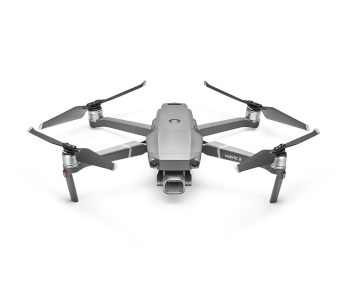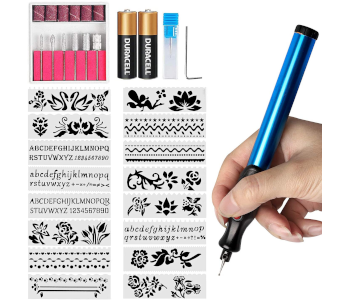How to Correctly Label Your Drone – FAA Registration Number
Although registering your drone with the FAA and labeling them have been pretty well-established standards for several years, the FAA has more recently changed the requirements for how registered drones should be labeled. This was a response to concerns of drones being used for malicious reasons -somehow valid considering how regularly drone-related incidents happen.
If you’re a beginner drone pilot who just stumbled into this article, then don’t worry – we’ll explain the standards in detail and perhaps even give a short cut to a reliable solution.
Which drones need to be labeled?

Before jumping into the labeling standards, let’s talk about FAA registration first. According to the FAA rules, all drones that weigh 0.55 lbs. or more need to be registered. This rule applies only to drones used recreationally or for fun. If you intend to use the drone commercially or to earn money, it needs to be registered regardless of its weight.
To register your drone, simply go to the FAA DroneZone website and click the appropriate registration link. You will have to provide a few details and pay the $5 registration fee. Commercial users will have to register their drones individually, while recreational users only need to register one time even if they own multiple drones.
Upon successful registration, you will receive a unique registration number via email. Write this down as you’ll be needing it later.
To get back to the original question – which one of your drones needs to be labeled? The simplest answer is to assume that all drones that need to be registered also need to be labeled. The next question to ask is – how are you supposed to label your drone?
Three ways to label your drone
The FAA’s old labeling rules were less exacting, only requiring that drones be marked somewhere in its body with its associated registration number. In most cases, drone pilots back then placed stickers somewhere in the battery compartment or in a spot that is partially concealed.
Starting February 2019, the FAA required that all drones be labeled in a manner that is permanent, legible, and easily recognizable upon visual inspection. This reduced the need for emergency responders to physically touch the drone before it can be recognized based on its registration number, thus potentially protecting them from malicious drone-based attacks.
The FAA recommends three ways to label your drone:
Engraving

Engraving the registration number directly on the body of your drone certainly fits the bill when it comes to being permanent, although it’s a little TOO permanent for our taste. The easiest way to do this is to buy a cheap electric pen engraver and get to work on your drone. If you’ve never used a pen engraver, you might want to practice on another plastic surface first.
This strategy could turn out problematic if you’re planning to sell your drone in the future. The registration number is tied to your identity as a drone pilot and thus needs to be canceled if the drone will change ownership. However, an engraved label would be difficult to remove without significantly damaging the surface of the drone.
We suggest that you engrave your drone only if you have no plans of selling them. Conversely, you may just have to live with the fact that selling a drone with an engraved label is not an option.
Permanent marker
By far, labeling your drone with a permanent marker is the easiest way to comply with FAA requirements. Simply write down your registration number somewhere on the drone’s body that is obvious. The advantage of using a permanent marker is that you probably already have on lying around the house, plus it’s still removable with some solvent.
There are two potential issues when you use a permanent marker. The first is that it tends to fade away rather quickly, especially if your drone catches a lot of wind and sun. This means you’ll have to touch up those labels every now and then. The second problem with this approach is that it just doesn’t look good. Ruining the aesthetics of a thousand-dollar drone with some permanent marker does not feel right.
Sticker
Lastly, you could print out some sticker labels and place them on your drone. This isn’t as convenient as using a permanent marker but should still take less work than using a pen engraver. The nice thing about a sticker is that it’s permanent just for as long as you want it to be. When it’s time to sell your drone, even an old sticker can be removed with some solvent and a little elbow grease.
Another advantage of using a sticker is that you can play around with its appearance to make it match your drone. You can make it playful or as professional as you’d like. No matter what design you go with, you should be able to easily come up with something that looks better than a permanent market label.
Buy sticker labels for your drones

If you decide to go for sticker labels, you have two options – print them yourself, or have someone else design and print them for you. There are a lot of services out there that will allow you to customize sticker labels and print them with a professional-grade design.
Drone ID Services is a good example, as they offer bundles that are custom designed for different drone models. Each bundle comes with three stickers – one that indicates your FAA registration number, another for your contact number in case someone else recovers your drone, and another that points to a website for recovering and reclaiming lost drones. All stickers are laminated, waterproof, and UV-resistant to protect them from fading when exposed to the outdoor elements. Of course, which stickers to place on your drone is entirely your choice.
As another bonus, you will receive a laminated credit-sized FAA ID card when you buy stickers from Drone ID Services. This is basically a printout of the email that the FAA sends you when you register your drones and is a handy accessory whenever you go out to fly your drone.
Final thoughts
The stricter labeling standard for all registered drones is part of the FAA’s drive for increased accountability for drone flight. This seems like a justified response considering the spate of incidents involving drones being used for voyeurism, to interfere with aircraft operations, or even to smuggle goods into detention centers.
This measure is very easy to comply with but it’s not perfect because it assumes that all drone pilots are compliant. After all, a person planning to use a drone to commit a crime likely won’t be registering and labeling it. For those of us who fully plan to follow the laws, labeling our drones properly is a small matter.

